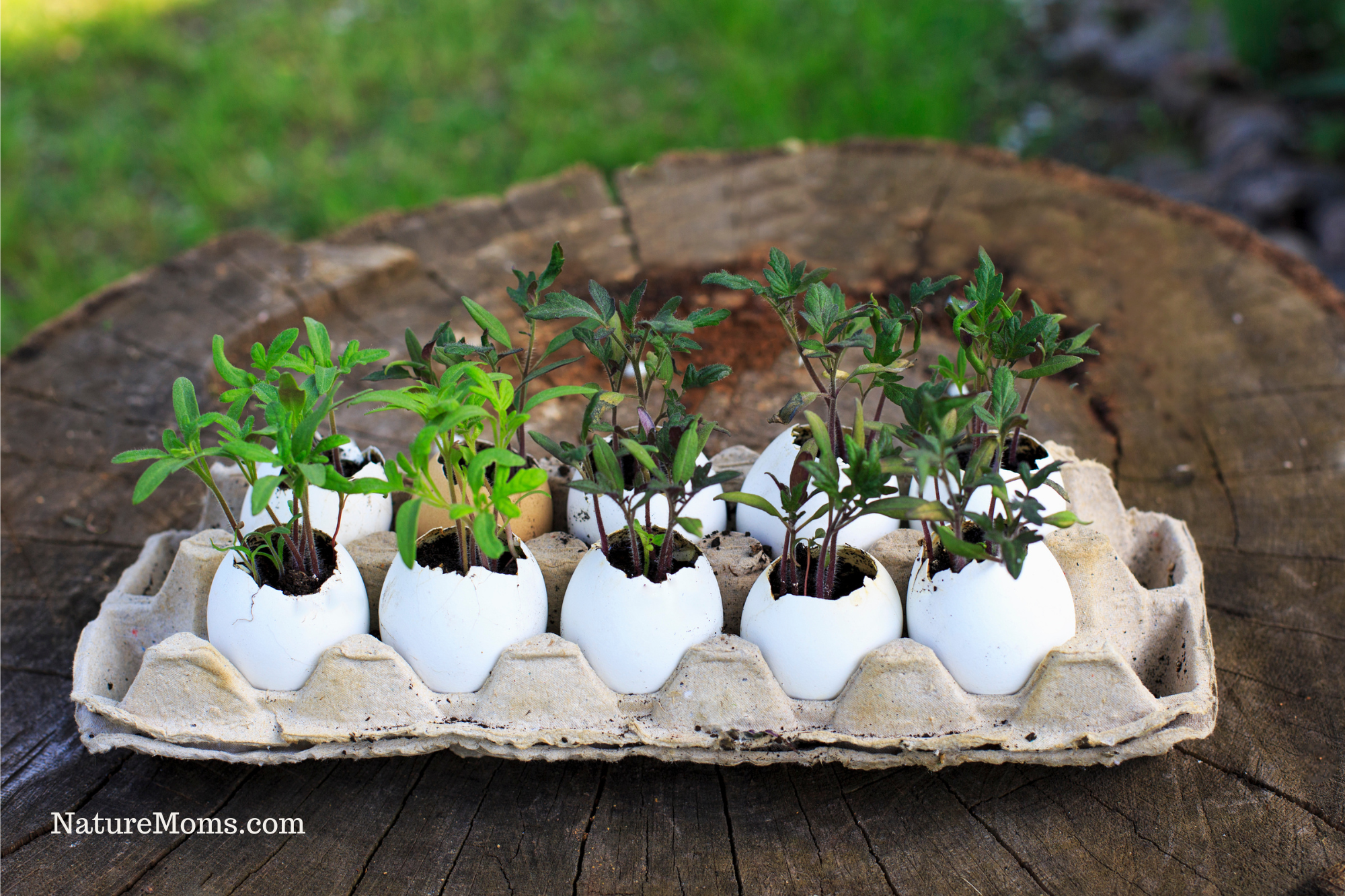 I’ve got my garden on the brain so I thought I might share some of the stuff I do to get ready for planting season and also do throughout the season to keep costs in check and reuse what I have.
I’ve got my garden on the brain so I thought I might share some of the stuff I do to get ready for planting season and also do throughout the season to keep costs in check and reuse what I have.
There are actually many things around the house that can be used to get seedlings started and it makes use of garbage you have around the house, effectively recycling things to give them another use.
First off…to start seedlings you need some little pots. There is no need to buy them…you may already have them. You can make little planters from toilet paper rolls, newspaper, and eggshells.
To make planters from toilet paper rolls:
- Cut each roll in half and press it flat.
- Make four, half-inch to three-quarter-inch slices on one end of the roll to create four equal-sized flaps.
- Open up the roll and fold in the four little flaps like a box bottom.
- Fill with soil and plant your seeds!
You can grow these indoors next to windows (for light) or under grow lights and then when it comes time to plant them in the garden just unwrap the bottom and stick it in the ground. The paperboard of the toilet paper roll will disintegrate over time.
Egg shells can also be used for smallish seedlings and be put directly in the ground for planting. It is easier to manage them if you keep them in an egg container so if you get egg containers from the grocery make sure to save them AND the egg shells. If you get fresh eggs (like I do part of the year) then ask a friend to save their egg containers for you. Crushed eggshells can also provide essential nutrients like calcium to your garden soil. Scatter them around your plants to deter slugs and snails while enriching the soil with valuable minerals.
Newspaper is another super easy planter. Just take a piece of newspaper and fold it in half once or twice lengthwise. Then roll it around a can or a glass to make the basic “tube” shape. Pull the can or glass out and then fold one half in to make a bottom. Now you are ready to add soil and seeds and these planters can also go directly in the ground and you don’t need to unravel the bottom as newspaper will disintegrate pretty fast. Use this nifty newspaper pot maker for super easy pots.
Another idea is to use old newspapers and cardboard boxes as a weed-suppressing mulch in your garden. Lay them down in between rows or around plants, and cover them with organic material like straw or wood chips. These materials decompose over time, enriching the soil in the process.

Old wooden pallets can be transformed into vertical planters or compost bins. By standing them upright, you can create a space-saving garden for growing herbs, flowers, or even vegetables. Pallets are an excellent way to repurpose wood and add a rustic aesthetic to your garden.
Wine Corks can be repurposed as plant markers. Write the names of your plants on the corks and stick them into the soil next to each plant. This not only adds a decorative touch but also helps you identify your plants easily.
If you want to get a jump on your outdoor planting but worry about an unexpected frost I have a solution for that too. Save your plastic juice or milk jugs … or ask neighbors for theirs if you don’t use them… and then cut the bottom 2-3 inches off so that you have the perfect cloche to put over your seedlings in the garden. You need transparent milk jugs though not the white or yellow ones that won’t let light through. Also, the 2-3 inch section you cut off can now be used as a tray to start more seeds.
This cloche will protect your seeds from cold, frost, and bugs while allowing them to grow still. Using cloches for bug management also helps you keep to your organic intentions too. :)
You can also use milk jugs to water your plants. I keep one under my sink (full of rainwater) to water my indoor plants but they also work for outdoor watering. Just heat up a sewing needle over an open flame and then use it to poke 4-6 holes in the cap. Now the water will stream out of the holes to water your garden. Easy peasy!
I hope these ideas help you get motivated to start that dream garden this year. For more inspiration you may want to check out the book The Revolutionary Yardscape: Ideas for Repurposing Local Materials to Create Containers, Pathways, Lighting, and More. It’s full of ideas!



